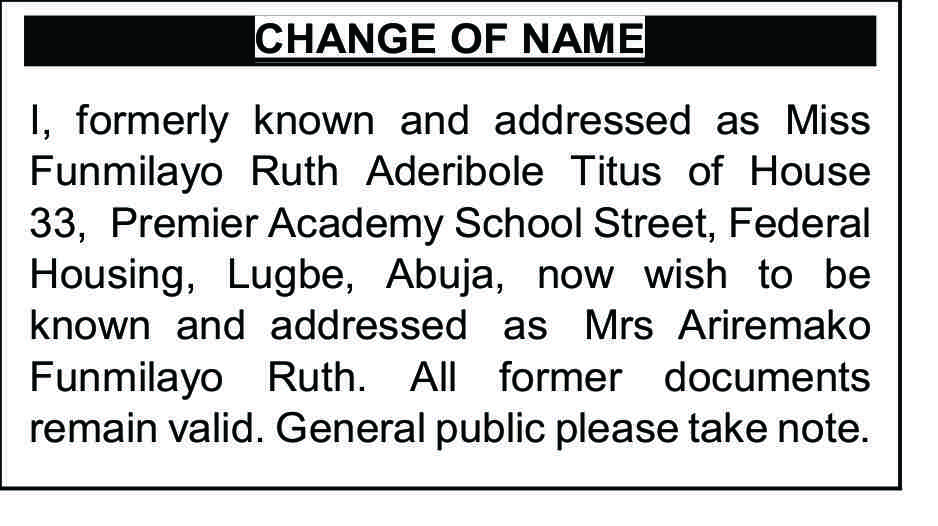Features
A parallel between Flight Lieutenant Abayomi Dairo of Nigerian Air Force and Captain Scott O’Grady of US Air Force

By Usman Okai Austin
My aging brain still has a vivid memory of that fateful wet morning of June 3, 1992 when the news broke on CNN. The previous day, on June 2, 1992 to be precise, the Bosnian-Serb Army had shot down an F-16 fighter aircraft belonging to the United States Air Force (USAF) that was part of NATO Expedition Force that was tasked to enforce ‘No Fly Zone’ in defunct Yugoslavia.

The pilot of the ill-fated fighter aircraft is Captain (Flight Lieutenant equivalent) Scott O’Grady. His aircraft was hit by a 2K12-KUB Surface-to-Air (SAM) missile belonging to the Bosnian-Serb Army. The young Pilot successfully bailed out of the infernal death machine only to land in hostile enemy zone. His lead Pilot on the mission, Captain Robert Gordon Wright saw Captain O’Grady’s fighter aircraft engulfed in flames as it went down and presumed that his wingman had perished. Elsewhere, Serbian soldiers waited for the downed pilot to land. They went after Captain O’Grady immediately in order to slaughter him for his juvenile impudence and to humiliate his ‘arrogant’ country that would not stay in its lane. The well trained Pilot discarded his parachute quickly and ran off in attempt to evade the vengeful Serbian soldiers that were pursuing him. He ran, hid, muddied his white face for camouflage and ran some more for six days. He came close to being killed on numerous occasions by burst fire from Serbian riffles that went off indiscriminately around his hiding positions meant to either finish him off or flush him out for instant execution.
During his ordeal, the young fighter pilot survived exhausted his COMPO ration and resorted to eating grasses and wild fruits for survival. He also drank his own urine and droplets of rain water that he collected using his socks as sods. To prevent coming down with malaria as he escaped, Captain O’Grady swallowed the anti-malaria drug that he carried in his Pilot Survival kit and kept beeping out signals from a small transmitter that he carried on his person that was also part of the Survival kit. Meanwhile, he saw numerous NATO aircraft hovering above him from his hidden positions but dared not send voice signal over his portable radio lest he gave away his position to the pursuing enemies.
According to the account that he gave after being rescued, he was frightened at some point by the prospect of a painful death that stared at him during day time from hostile Serbian soldiers and from wild animals at night. According to the young pilot, he prayed and sobbed at the same time but kept going on with a somewhat stoic belief that a miracle could happen.
Finally, a NATO aircraft flying a sortie over his location picked up a weak signal from the downed Pilot’s radio that had begun running out of power at that point. The Pilot of the mission aircraft dismissed it as a decoy enemy signal meant to draw him to a killing range initially. So he ignored it and proceeded cautiously while evading hostile enemy fires. On a second thought, he remembered his lost colleague whose aircraft was shut down a few days previously. Instantly, he made a detour back to the spot where he picked the weak signal. There again he picked the same signal and on interrogation ascertained positively that the Signal came from Captain Scott O’Grady. He flew back to base immediately and reported that Capt O’Grady was alive and that he was in contact with his downed colleague.
Instantly, a Marine Expeditionary Task Force was constituted from the body of Marine Corps that was aboard USS KEARSARGE; a US Navy carrier that was deployed in the Baltics as part of NATO Task Force. The mission of the Marine Expeditionary Task Force was to rescue the downed pilot before the enemies got him. Before long, a flight Amanda comprising CH-Sea Stallion transport Helicopters, AH-1W SuperCobra Gunship Helicopters and AV-8B Harrier Jump jet fighters was on its way to pick up the downed pilot. Setting off at dawn from the US Carrier, the Amanda came under intense enemy fire while underway because it was caught up by daylight before it got to the mission’s zero ground.
Nonetheless, it reached its destination with the two Sea Stallions touching down delicately in Landing Zone that was indicated by Captain O’Graddy’s smoke signal. As the marine forces trooped out of one of the helicopters to form a defensive security perimeter in the Landing Zone, the Harrier and SuperCobras hovered over and around the general area ready to offload their mortal payloads on any force or object that posed any threat to their mission. In a jiffy, a young but frail looking officer in pilot suit dashed out from the bushes and ran towards one of the Stallion Helos. He was literally dragged on board one followed in quick succession by the marines that formed security perimeter. Under 8 minutes of precision military operations, the Amanda was once again underway, headed for USS KEARSARGE to offload Captain Scott O’Graddy into the safe and re-assuring bowels of the United States of America Navy Carrier.
The scene at St. Andrews Air Force Base as the feet of Captain Scott O’Grady touched down on US soil and he knelt down to kiss the tarmac before pronouncing ‘God bless America’ in teary eyes is still etched freshly on my mind as I write this piece. He was received in audience by His Commander-in-Chief that instantly awarded him the ‘Purple Heart’ medal in addition to the Bronze Medal he received from USAF for his bravery and excellent service.
Fast-forward to July 18th, 2021 and somewhere in the forest that straddles Kaduna and Zamfara Statea of Nigeria. A Nigerian Air Force (NAF) Alpha Jet fighter aircraft returning from what Nigerian authorities described as a ‘successful mission’ came under intense fire of bandits and it came crashing down to a disastrous end. The young pilot, Flight Lieutenant (Flt Lt) Abayomi Dairo, like Captain O’Grady of USAF in our earlier story, ejected successfully to safety also in a hostile enemy territory that was infested with bands of terrorists and bandits. These also sought to also kill the pilot of the ill-fated Nigerian fighter aircraft. Like Captain O’Grady, Flt Lt
Abayomi discarded his parachute quickly and ran off speedily on foot away from pursuing enemies. The young Nigerian pilot like his American counterpart, we were told, relied on his navigational skills and survival kit to evade enemy camps and settlements all night until he arrived at a Nigerian Army Unit located on the fringes of the forest where his Alpha Jet fighter aircraft was shot down. At least, this was the official account that was issued by the NAF after first denying that any of its aircraft was involved in a crash. However, eyewitness accounts while insisting that a NAF aircraft crashed somewhere in the forest spanning the boundary of Kaduna and Zamfara States averred that the pilot of the aircraft also ejected to safety.
However, unlike the official account of the Nigerian government, the witnesses states that the Nigerian pilot ran to one of the villages adjoining the forest and was hidden by the locals overnight. The villagers subsequently aided the Pilot to disguise as one of them before ferrying him off to a safe crevice within their Village Chief’s palace. Thereafter, the Village Chief got in touch with some Nigerian military authorities that dispatched a NAF Helicopter accompanied by another fighter aircraft to fetch the downed pilot to safety in Abuja. Like Captain Scott O’Grady, Flt Lt Dairo is another hero that put his life on line of fire for his country. But this is where the similarities between the USAF pilot and that of NAF ends. The dissimilarities are many in professional sense and on governmental plane. While not intending to attenuate the great sacrifices of the Nigerian pilot to his country just like his USA counterpart, there is nonetheless a reason or two for seeking clarification from the Nigerian Government about what really happened? Was it truly an Alpha fighter jet that was brought down by bandits or terrorists or both? At what altitude, course and speed was the aircraft flying? Was it brought down by a missile or Anti-Aircraft fire or light weapon fire? Why did the NAF first deny that one of its aircraft had crashed only to re-admit that indeed, one of its Alpha Jets was brought down by bandits?
These questions deserve answers from the Nigerian Government to Nigeria’s tax-paying public whose resources were used to acquire the aircraft and are being used to maintain as well as sustain their operations.
For example, the Alpha Jet is a light attack aircraft capable of making supersonic speed of 994-1,000 kilometer per hour. Like other Jet fighters, by the time one hears its roaring sound it would have flown past and gone far, blending with the horizon such that unless one uses a pair of binoculars, it will be difficult to see it clearly. The aircraft climb altitude is not less than 35,000ft above sea level and has a fighting range of 610km. With these characteristics, is it possible for bandits to bring down a jet without using sophisticated radar-based missile system? And if that is what they used, are we not facing a formidable adversary increasingly? Could technical error or error of human judgement be responsible for this latest crash? Could the pilot not have recoursed alternative route away from enclaves of bandits after a successful operation?
In a functional clime, legislative committees on defence and armed services will invite the executive to explain what happened. It will also carry out independent investigation of its own to unravel the cause of the recent crash of NAF Alpha Jet in order to prevent future occurrence.
As for Fl Lt Dairo, we await to see whether he can in good conscience like Captain O’Grady kiss the earth, look into the heavens and say ‘God bless Nigeria.’

























